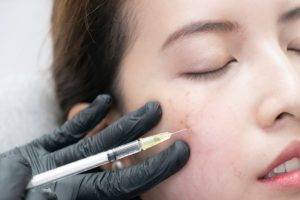Diabetic macular oedema is a complication of the macula that occurs gradually and affects patients with both type 1 and type 2 diabetes. Read on to find out more about this complication that can potentially cause blindness if left uncontrolled.
What is diabetic macular oedema?
The macula is the central part of each retina, situated at the back of the eyes and composed of blood vessels. It functions to allow for central vision and helps with focusing and seeing finer details.
In diabetic patients, higher blood sugar levels damage the blood vessels present in the inner wall of the retina and in some cases completely block it, otherwise known as diabetic retinopathy.
Further complications arise when tiny lumps project from the walls of these blood vessels and leak fluids and blood into the retina. An accumulation of these fluids and blood in the retina will result in swelling of the macula, or more commonly known as diabetic macular oedema which can lead to problems with vision or even blindness
Different forms of diabetic macular oedema
Diabetic macular oedema can have two forms:
- Focal diabetic macular oedema which develops due to abnormalities in the blood vessels in the eye.
- Diffuse diabetic macular oedema which develops due to the widening or swelling of the retinal capillaries.
Symptoms
In the initial stages, symptoms are not noticeable, however, if you are diabetic, you should follow up with an ophthalmologist annually to examine your eyes for any changes. Early treatment of diabetic retinopathy or diabetic macular oedema can prevent or restore vision loss.
Common symptoms associated with diabetic macular degeneration include:
- Blurred vision
- Presence of a large number of floaters
- Seeing washed-out colours
- Double vision
If left untreated, your vision can significantly worsen in a short span or time and in severe cases, can cause blindness.
Risk factors
People suffering from type 1 or type 2 diabetes are most vulnerable to developing diabetic macular oedema. Other risk factors that can cause diabetic macular degeneration include:
- Improper management of blood sugar
- High cholesterol levels
- Hypertension
- Kidney diseases
- Sleep apnea
- Pregnancy
- Fluid retention
- Hypoalbuminaemia
Screening for macular degeneration
Common tests to screen for macular degeneration or assessing eye damage are:
- Optical coherence tomography to measure any swelling in the retina.
- Fundus imaging which takes detailed pictures of the retina and checks for irregular blood vessels.
- Fluorescein angiography where a dye is injected into the arm or hand to highlight the blood flow in the retina.
Prior to commencing any of these tests, eye drops are placed in the eyes to dilate the pupils, This allows an ophthalmologist to examine the retina clearly. Apart from the light sensitivity experienced due to pupil dilation, the above mentioned tests do not cause any discomfort.
Treatment of diabetic macular oedema
Mild cases of macular degeneration can resolve without the need for any treatment. However, almost all patients will require laser photocoagulation treatment.
Laser surgery
This requires firing a laser at the area of leakage to seal it off and prevent it from progressing further. The laser may cause small areas of the retina to burn, however this recovers with time. Laser surgery can be painful and may make your vision worse right after completion before it gets better in a few weeks following the procedure.
Several laser treatments over time may be required to repair the damage to the retina and you may also require additional treatments if severe eye damage occurs. Complete recovery post-procedure can take between three to six months where the eye will heal and the swelling in and around the macula gradually subsides.
However, some side effects of laser surgery may include:
- Sensitivity to light
- Irritation in the eye
- Black spots in the retina
These side effects are fairly common and gradually disappear with time. Unfortunately, laser surgery does not guarantee improved vision
Maintaining your health
Monitoring your blood sugar, and cholesterol levels and adopting a healthy and active lifestyle to improve the condition of your eyes and allow for better outcomes if you undergo surgery.
Medications
Medications such as anti-vascular endothelial growth factor (Anti-VEGF) therapy which can prevent the growth of abnormal blood vessels that could further damage the eyes, while also reducing swelling. Anti-VEGF medications have shown success in improving vision while reducing the amount of fluid that leaks into the retina and they present lowered risk of complications and are safe.
Other medications include steroids which may help to decrease swelling of the retina and improve vision. Steroids may be available as either single injections or implants that release medication over time. However, steroids carry a risk of causing cataracts in some cases.
Your ophthalmologist will determine the specific medication and frequency of treatment that is optimal for you.
Prevention
In order to avoid diabetic macular degeneration, it is recommended to maintain a healthy lifestyle that includes regular exercise, consuming plenty of fruits and vegetables, and annual visits to your ophthalmologist.










